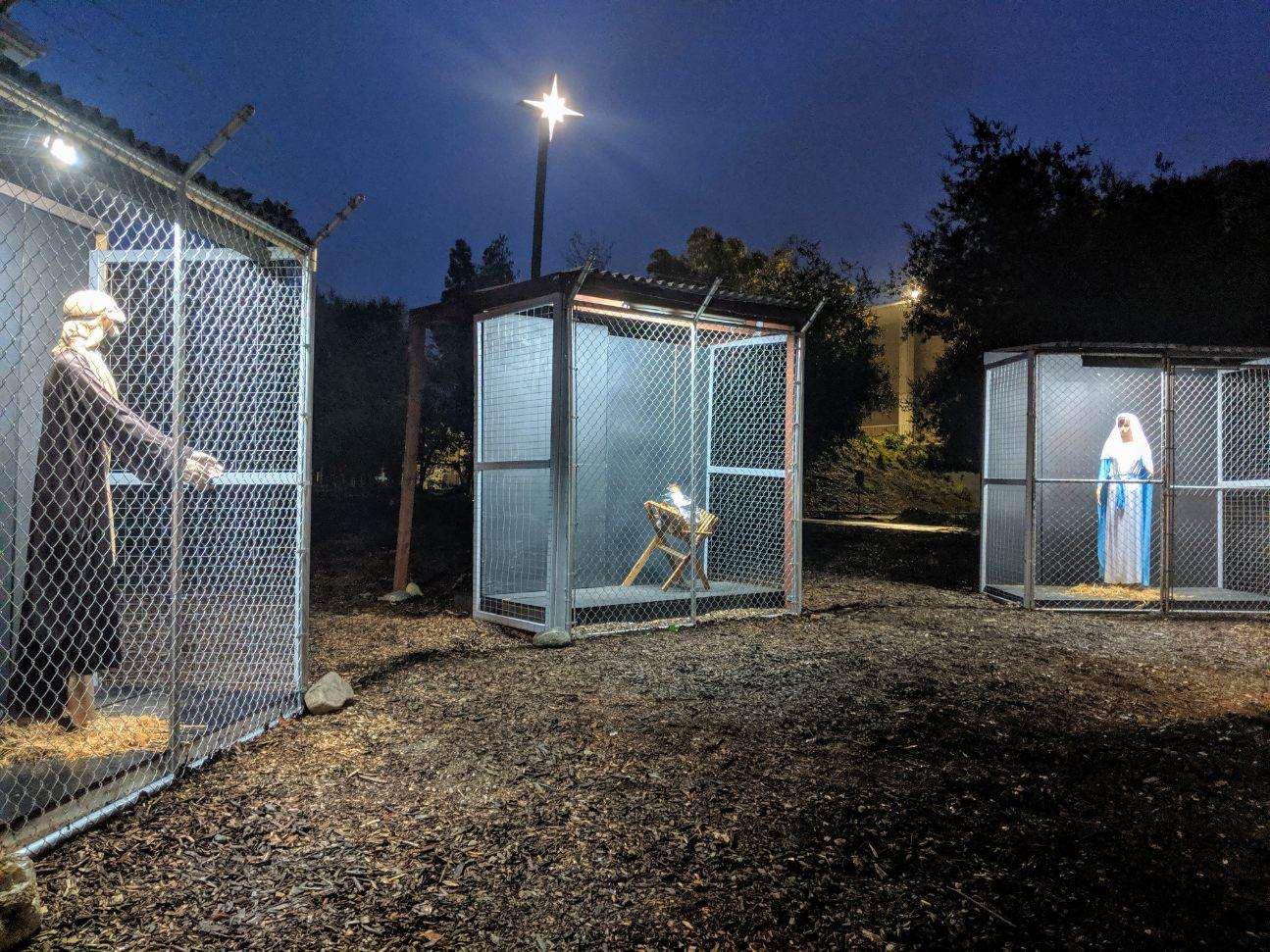Jesus, Mary and Joseph separated at border in church's nativity scene
Manger scene is counter to US policy of separating immigrant families

Your support helps us to tell the story
From reproductive rights to climate change to Big Tech, The Independent is on the ground when the story is developing. Whether it's investigating the financials of Elon Musk's pro-Trump PAC or producing our latest documentary, 'The A Word', which shines a light on the American women fighting for reproductive rights, we know how important it is to parse out the facts from the messaging.
At such a critical moment in US history, we need reporters on the ground. Your donation allows us to keep sending journalists to speak to both sides of the story.
The Independent is trusted by Americans across the entire political spectrum. And unlike many other quality news outlets, we choose not to lock Americans out of our reporting and analysis with paywalls. We believe quality journalism should be available to everyone, paid for by those who can afford it.
Your support makes all the difference.A church in California flipped the lights on its outdoor manger scene on Saturday evening to reveal Jesus, Mary and Joseph as border detainees, each figure isolated in its own chain-link cage with a barbed-wire top.
The nativity display from Claremont United Methodist Church, a suburban congregation east of Los Angeles, is raising both praise and ire for its depiction of the biblical story of Jesus' family fleeing to Egypt in the context of controversial US immigration policies.
The nativity is meant to highlight the plight of migrants and refugees, a longtime cause for this 300-member congregation, said the reverend Karen Clark Ristine, the church's senior pastor.
“Our intent is to focus on the asylum seekers and the ways they are being greeted and treated and to suggest there might be a more compassionate way to show God's love,” Ms Ristine said. “I think as Christians we have a responsibility to proclaim a narrative that might be counter to what the world thinks.”
Claremont's nativity, planned since July, is one of many “protest nativities” to attract attention in recent years. Some have advocated for gun control, for marriage equality and against war – one of the first protest nativities was set in New York's Central Park in 1969 as a statement against the war in Vietnam.
Biblical interpretations suggest that after Jesus' birth, his parents took him to Egypt fearing King Herod would have him killed.
Ms Ristine, who joined the congregation in July, posted pictures of the nativity to her personal Facebook page and was stunned by the response – more than 15,000 shares and 4,000 comments in one day. Most have been supportive and have spawned an online discussion about inclusion, she said.
“Thank you for living the faith and reminding us of the true story – and message – of Christmas,” Shelby Edwards wrote on Ms Ristine's Facebook page, and a pastor from Australia wrote, “Well done, Claremont.”
But others were offended by the nontraditional scene. “I am appalled to say the least about your nativity scene in your church,” Edwin Musto, a methodist, wrote on the church's Facebook page. “It is despicable that you can bring politics into our church!”
Ms Ristine rejected the notion of the nativity as a political statement.
“A nativity is the theological equivalent to public art, and the role of public art has always been to offer awareness,” she said. “Jesus taught us kindness and mercy and the radical welcome of all people.”
Some scholars say the first nativity scene, which many say was created by Saint Francis of Assisi in the 13th century, was itself a political statement because Saint Francis hoped it would call attention to the suffering of the poor. In an interview with America magazine, Felicity Harley-McGowan, a Yale University lecturer, said nativities have been a means “to articulate contemporary concerns” for centuries.
Last Christmas, churches in Indiana, Massachusetts and Oklahoma staged nativity scenes with all or some of the figures in cages, leading to the social media hashtag #holyfamilyseparated.
Leaders at each of the churches described their scenes as protests of US immigration policy under the Trump administration, which has detained thousands of families at the US-Mexico border since 2017. About 5,400 children have been separated from their families, according to a recent count by the American Civil Liberties Union.
At Claremont, the outdoor nativity, which sits along Old Route 66, a highway travelled by Dust Bowl migrants during the Great Depression, is paired with a second nativity inside the church's front doors. There, the same “holy family” mannequins, freed from their outdoor cages, cluster around a cradle.
“You are seeing them reunited as we believe it is in the realm of God's love,” Ms Ristine said.
The Washington Post
Join our commenting forum
Join thought-provoking conversations, follow other Independent readers and see their replies
Comments